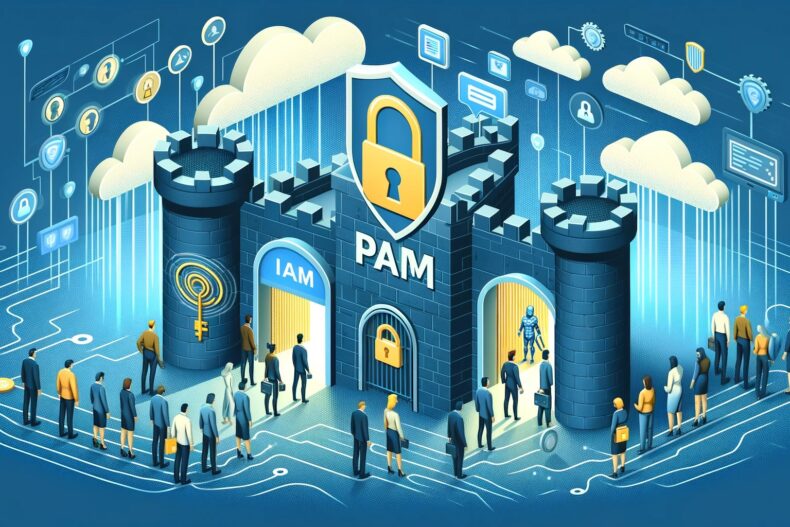Our digital landscape is a treasure trove of sensitive data, but managing access can be a complex balancing act either fortify your defenses or lead to a security fallout. Too strict, and productivity plummets. Too loose, and security breaches become a nightmare. This blog explores the power duo of Identity and Access Management vs Privileged Access Management (IAM vs PAM) and – your keys to unlocking a secure and efficient access strategy.
What is the Difference Between IAM vs. PAM?
While both IAM and PAM manage access, they tackle different aspects of the digital security landscape.
Identity and Access Management takes a broader approach, acting as a framework for managing all user access – employees, contractors, and even automated systems (bots). IAM verifies user identities, enforces access controls based on roles and permissions, and ensures the right people have access to the right resources at the right time.
On the other hand, Privileged Access Management solutions focus on securing and controlling access for privileged users – the administrators and security professionals who hold the “golden keys” to critical systems and data. PAM ensures these privileged credentials are managed securely, with features like just-in-time access and detailed activity monitoring. It fortifies the vault’s most valuable keys against fallout.
In simpler terms, IAM is the gatekeeper, ensuring everyone has the appropriate access badge, while PAM focuses on securing the vault’s most valuable keys.
How Can Privileged Access Management (PAM) Enhance Identity and Access Management (IAM)?
Privilege can and should play a vital role in an IAM lineup. Integrating privilege with an IAM framework will increase security as privileged accounts are too often targeted by attackers. Not to forget that compliance regulations and standards like GDPR, HIPPAA, and the very widely used SOX, require specifications that can be fulfilled with privileged access management as part of the IAM toolset.
Integrating PAM with IAM can transform access controls to become more fast and effective while decreasing overall risk. Risk management can be aided by PAM and many other functions such as least privilege and approval controls that make it a must for any security plan.
The Key to Fortifying Security: Implementing Privilege in Your IAM
Imagine your organization as a house, complete with a front door and access to all the different rooms in the house. Granting everyone a master key creates chaos and vulnerability. Everyone knows the Primary Bedroom is off-limits! This is where the principle of least privilege comes in – granting users only the access they absolutely need to perform their jobs.
To implement this effectively, leverage your PAM/IAM solution’s discovery tools to unearth all privileged accounts, prioritizing the most critical for strongest protection. Ditch the “always-on” approach by implementing Just-in-Time (JIT) access, granting elevated permissions only when tasks require them. Remember, the smaller the attack surface, the harder it is for attackers.
PAM & IAM Working Together
A unified PAM and IAM approach is essential for modern cybersecurity landscapes.
While PAM and IAM have distinct roles, they are far more powerful when combined. By implementing both solutions effectively, you can create a multi-layered security strategy that safeguards your most valuable assets, boosts productivity, and keeps your organization safe from evolving cyber threats.
Ready to learn more? Contact IDMWORKS today for a free consultation to secure your cloud fortress.
Author: Charles Troll, IDMWORKS, IAM Engineer
